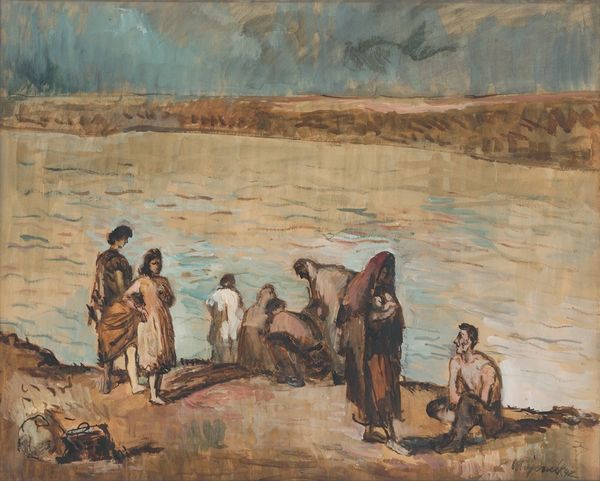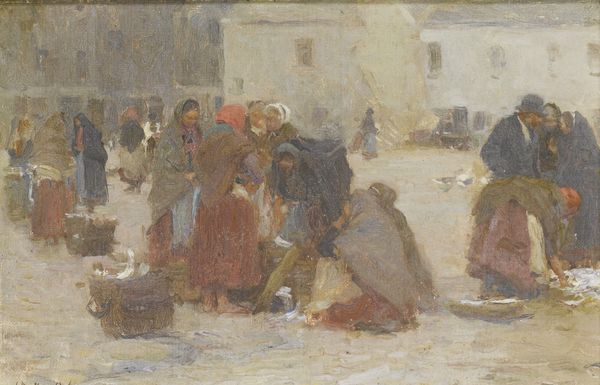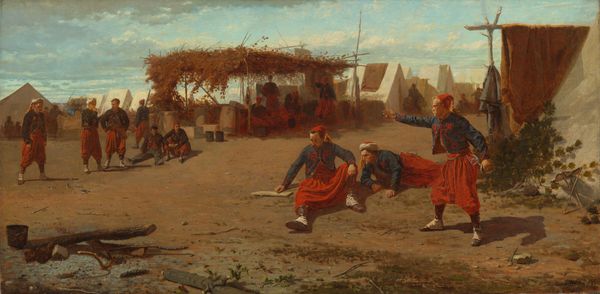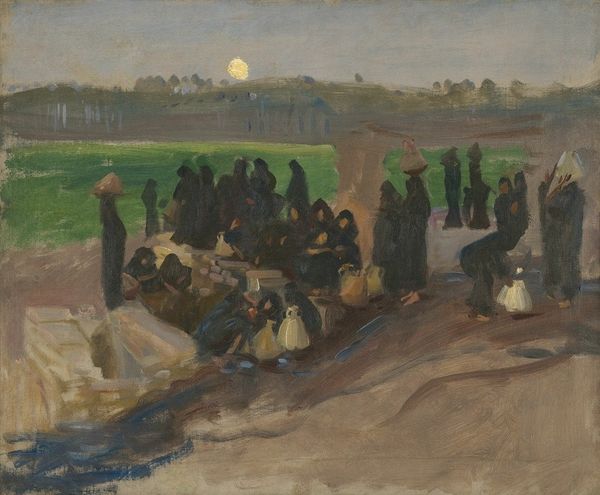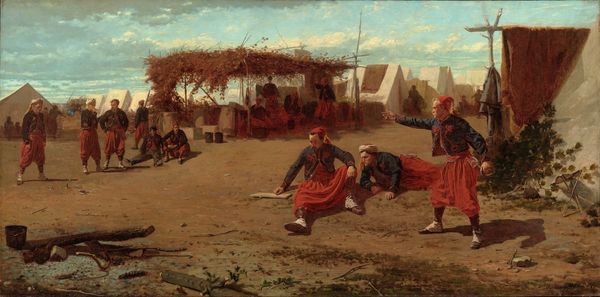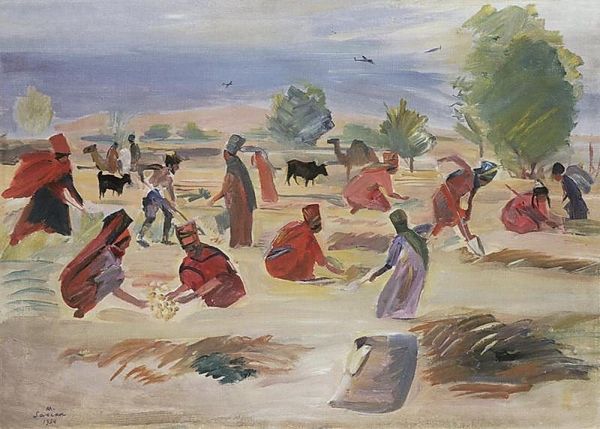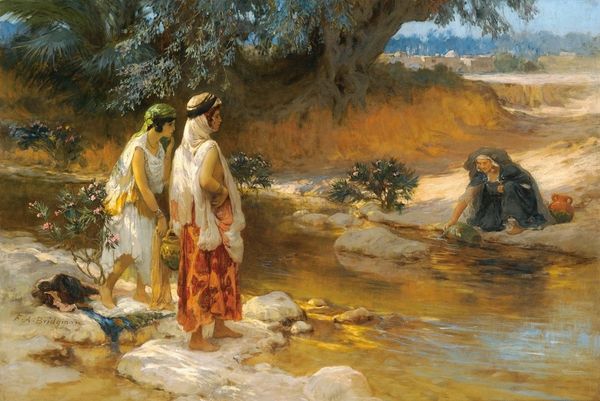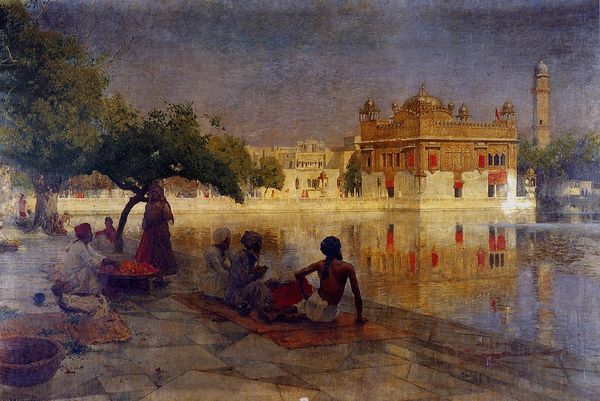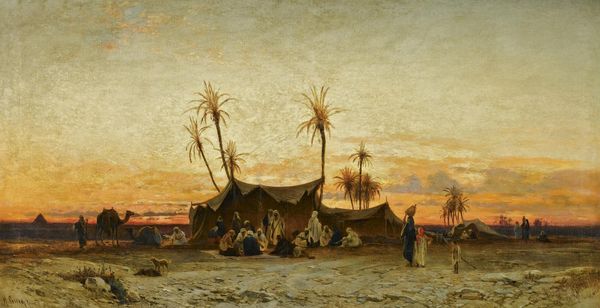
painting, plein-air, oil-paint
#
portrait
#
figurative
#
painting
#
plein-air
#
oil-paint
#
landscape
#
oil painting
#
orientalism
#
genre-painting
#
academic-art
#
watercolor
#
realism
Copyright: Public Domain: Artvee
Edwin Lord Weeks made this painting, Water Carriers of the Ganges, in the late nineteenth century, a period of immense social change in India under British colonial rule. Weeks was an American who travelled extensively in India, and who made a career out of painting scenes of everyday life there. The painting depicts a group of women carrying water from the Ganges River. The Ganges is a sacred river to Hindus, and is used for bathing and drinking. But the painting doesn't tell the whole story. How did colonial rule and its institutions affect the communities living along the river? Was the increased trade impacting traditional ways of life? Weeks’s vision of India was shaped by the prevailing orientalist attitudes of his time. He presents a picturesque view of Indian life, perhaps ignoring the social and economic realities of British rule. As art historians, we must delve deeper, using archival research and postcolonial theory to understand the complex relationship between art, culture, and power. By examining Weeks’s painting in its historical context, we can gain a richer understanding of the social and cultural forces at play in colonial India.
Comments
No comments
Be the first to comment and join the conversation on the ultimate creative platform.
